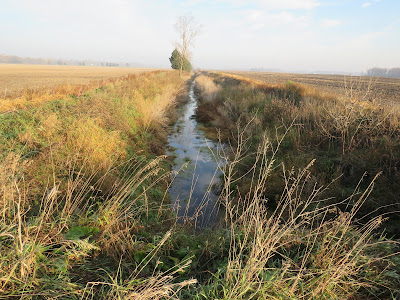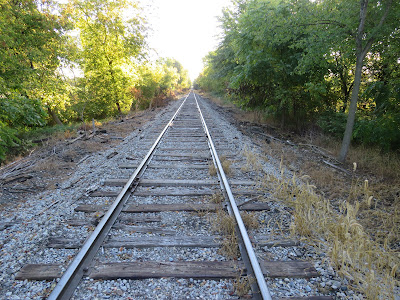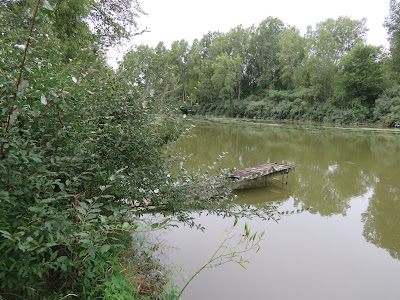Under mostly cloudy skies and temperatures in the mid 20’s, I head west on the paved Meijer bike trail through a snow-covered landscape, just west of Vestaburg. On the path, I recognize tracks of a Cottontail rabbit and a Fox squirrel while off to my right in the underbrush, I catch a quick glimpse of a perching Dark-eyed Junco. Further along, I’m surrounded by Tag Alder shrubs, displaying their reddish male catkins and dark female cones. Nearby, I come upon a willow shrub displaying 1-inch Pinecone Galls. These galls are produced by the Willow Pinecone Gall Midge to house, nourish, and protect a single fly larva (maggot) located deep within the gall (stock photo). Galls are formed when females use their sharp ovipositors to insert an egg into an apical bud. The females also introduce chemicals into the wound that turn plant genes on and off in the bud tissue at just the right time to direct gall formation. It is highly directed growth specific to the gall-maker. In this case, the improbable-looking willow pinecone galls are formed; they never develop into any other type of gall. Proceeding west, I enter the northern section of the 3000-acre Vestaburg State Game Area (stock Photo) where I notice some red fruit of a type of Viburnum called High Bush Cranberry. These berries will soften and sweeten over winter to provide food for Cedar Waxwings and other winter birds. Other fruit that catch my eye are clusters of shriveled-up Wild Grape. Next, I come by a dense patch of Phragmites (Common Reed) with their feathery flower-heads swaying in the breeze. The sight of a few cattails within the patch reminds me how this invasive species can takeover wetlands leaving less habitat available for other native species such as cattails to live and thrive. Phragmites form thick stands up to 12 feet high that easily shade out native species. They also clog waterways and negatively impact the expansion of desirable wetland habitats. Soon, I pause to watch the water of Wolf Creek flow slowly northward under the trail. From here it veers slightly west for about 2 miles under M-46 near Cedar Lake and then turns northeast for about 3 miles where it empties into the Pine River about 2 miles due north of Bass Lake (stock photo). Turning around, I face east and retrace my steps where I spot some Crust fungi on a branch and a colorful Northern Cinnabar Polypore mushroom on a decaying log. Near the car, I scan a woodlot where several of the tree trunks display blotches of mosses and lichens.
Robe of colors drops
Mighty oak stands bare
Creature scampers up
Toward his leafy lair
Hightailing skyward
Filling his cache
Over furrowed bark
Along branches gray
Perched in a crotch
Mate lingers near
Through barren twigs
Snow clouds appear
D. DeGraaf















